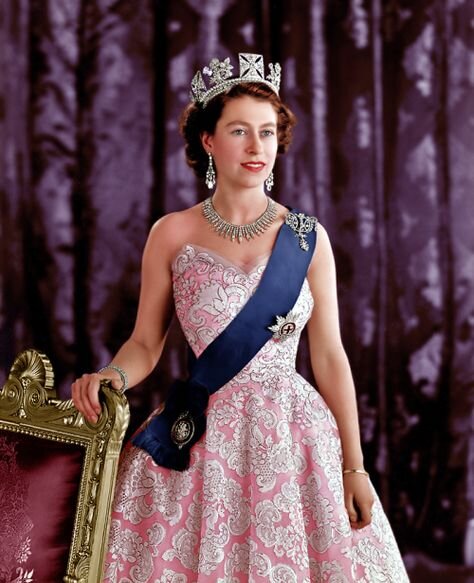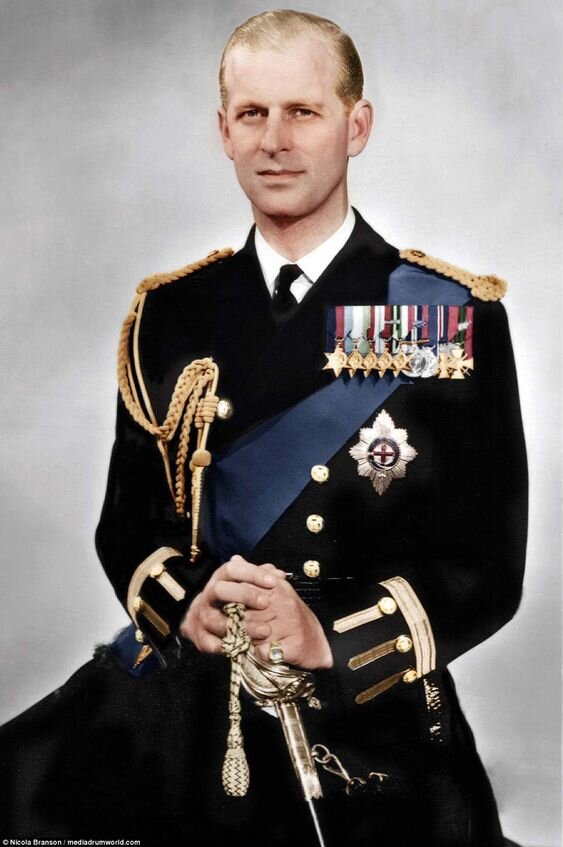The Medals, Sashes, and Tiaras of The Crown
All My Posts on The Crown
S3: 1 & 2: “Olding” & “Margaretology” 3: “Aberfan” 4: “Bubbikins, 5: “Coup” 6: “Tywysog Cymru” 7: “Moondust" 8: “Dangling Man” 9: “Imbroglio” 10: “Cri de Coeur”
S4: 1: “Gold Stick” 2: “The Balmoral Test” 3: “Fairytale” 4: “Favourites” 5: “Fagan” 6: “Terra Nullius” 7: ”The Hereditary Principle” 8: “48:1”
Season 1 Tiaras and Crowns of “The Crown”; The Medals, Sashes, and Tiaras of The Crown
Visual Cinderella References in The Crown S4E3 Fairytale
Every time a state banquet or occasion happens in the show, the actors’ costumes are positively covered in medals, sashes, necklaces, and ribbons. But what do they all mean? Let’s find out. :) =
Claire Foy as Elizabeth II in Season 1 of The Crown, wearing a a blue riband representing the Order of the Garter, several Royal Family orders, and a recreation of the George IV State Diadem.
Olivia Colman as Elizabeth II in Season 3 of The Crown, wearing a a blue riband representing the Order of the Garter, and a recreation of the George IV State Diadem.
The Queen wears the George IV State Diadem, made in 1820. It’s been worn by four queens so far, Victoria, Alexandra, Mary, and Elizabeth II.
Elizabeth’s Pink and Blue Ribbons with medallions: As you can see in the photos of Claire Foy and Olivia Colman, for state occasions, the Queen often wears medallions with portraits on them on some raw silk. These are Royal Family Orders, which are awarded to female members of the British royal family by the monarch (since women don’t get the commemorative medals that the men do). These badges include a small portrait of the monarch in a diamond frame placed over a ribbon; each monarch has a different color silk ribbon. Elizabeth’s pink ribbon badge is from George VI (her father) and her pale blue ribbon badge is from George V (her grandfather). Her own royal family badge is yellow. These awards are given out privately and not announced, so they only way you know whether a family member has received one is if you see them wearing them in public. These are only worn at formal events, like state dinners.
Elizabeth’s and Philip’s Blue Sashes: The sashes are actually called ribands, a fellow Crown fan helpfully informed me on Facebook (thank you Eric Hufford!). These are sashes worn over the left shoulder. A member will only wear one riband at a time, even if they belong to several orders. However, since some of the orders also come with badges, people may wear a riband from one order, and badges from several other, so they’re all represented. The orders of highest rank get the most prominent positions on a uniform and then are arranged in descending order of importance.
These blue sashes featured in the series look like the blue sashes of the Order of the Garter. The Royal Victorian Order actually is blue bordered by red and appears to be worn from the right shoulder instead of the left. (Thank you to the brilliant Royal Order of Sartorial Splendor blog for lots of info!)
Many different countries give out order sashes, and the ribands often come with additional insignia. The Order of the Garter riband is also worn with a Badge and a Star. A Knight of the Order of the Garter (a male member, as opposed to a Lady, a female member) also receives a mantle, feathered cap, and a blue garter with the order’s motto.
Apparently, the rules for giving out orders vary widely from country to country. Queen Elizabeth herself awards British orders fairly rarely. Orders are generally worn with men’s military uniforms or white tie dress code and with women’s gowns and tiaras.
By the way, although it’s not required for the Queen to wear white on state occasions, it appears that she generally does favor white or other light colored dresses, as those colors show off the ribbons and sashes very well.
Claire Foy as Queen Elizabeth in The Crown Seasons 1-2, wearing a blue sash representing The Order of the Garter, several royal family badges, and a recreation of Queen Alexandra’s Kokoshnik Tiara.
Queen Elizabeth II wearing Queen Alexandra’s Kokoshnik Tiara (Credit: Time Graham / Getty).
Olivia Colman as Queen Elizabeth in The Crown Season 3, wearing a blue sash representing The Order of the Garter, several royal family badges, and a recreation of Queen Mary’s Fringe Tiara.
Queen Elizabeth II wearing Queen Mary’s Fringe Tiara (Credit: Popperfoto / Getty).
The Tiaras: UPDATE 3/4/2021: I’ve started doing quick roundups identifying every crown and tiara featured in The Crown! Go check out the posts on Season 1 and Season 2!
In the photos at the top of this post, both Queens are wearing the George IV State Diadem. This diadem is traditionally worn by queens and queens consort in procession to coronations and state openings of Parliament. The Queen must like this one, as she has worn it on numerous other occasions as well
The photos directly above this Tiaras section show Claire Foy wearing a recreation of Queen Alexandra’s Kokoshnik Tiara, dating back to 1888, (left, Claire Foy), and Queen Mary’s Fringe Tiara (Olivia Colman, right). Elizabeth also wore the Fringe Tiara on her wedding day. All of her tiaras are gorgeous and have fascinating histories; if you want to learn more, Harpers Bazaar Australia has a great round up of the tiaras here.
The Queen has so many tiaras, y’all! The Court Jeweller has a fantastic Tiarapedia which methodically lists all of the United Kingdom tiaras that you should definitely check out for more information. I’ve included pics of a few of my favorite ones that I don’t really discuss much in this post below this tiaras section.
Anne wears the Meander Tiara, which was originally owned by Princess Alice of Greece and Denmark. The Queen wears the Girls of Great Britain and Ireland Tiara. The red and white ribands are for the order of Austria. When visiting a foreign country, that country’s order insignia takes precedence over your native country’s (Credit: Fox Photos / Getty).
Queen Elizabeth II wearing the Brazilian Aquamarine Parure Tiara, along with the matching necklace and earrings (Credit: Anwar Hussein / Getty). (Parure refers to a set of jewelry and tiara)
The Queen wears the Grand Duchess Vladimir Tiara in its “widowed” setting to meet President Obama. This tiara can be worn with emerald or pearl drops and without; it’s described as “widowed” when worn without drops (Credit: Chris Jackson / Getty).
Queen Elizabeth II wearing the Burmese Ruby Tiara (Credit: Terry O’Neill).
Matt Smith as Prince Philip in The Crown Season 2.
Tobias Menzies as Prince Philip in The Crown Season 3.
Prince Philip with Betty Ford (Credit: Historical / Getty).
Prince Philip at a state dinner for the President of Mexico (Credit: Justin Tallis / Getty).
Philip has a TON of medals, mostly earned for his wartime service in World War II. Many many thanks to the Daily Mail for the medal descriptions below, because good lord, it would have taken me a long time to look these all up on my own.
He is, of course, wearing his Order of the Garter blue sash and the accompanying badge and star.
1939-1945 Star: A campaign medal of the British Commonwealth awarded for service during the Second World War.
Atlantic Star: Awarded this in 1945 for service in the Atlantic during the Second World War
Africa Star: Awarded in 1945 for service in Africa during the Second World War
Burma Star (with Pacific Rosette): Awarded for service in the Burma Campaign in the Second World War
Italy Star: Awarded for service in Italy and surrounding areas in the Second World War
War Medal 1939-1945, with Mention in Dispatches: Awarded to those who served in the Armed Forces or Merchant Navy for at least 28 days between 1939-45. The oak leaf on the ribbon denotes the Mention in Despatches
King George VI Coronation Medal, 1937: These medals were made to commemorate the coronation of King George VI and Queen Elizabeth
Queen Elizabeth II Coronation Medal, 1953: A commemorative medal made to celebrate the coronation of Queen Elizabeth II
Greek War Cross, 1950: This is awarded for heroism in wartime to both Greeks and foreign allies. The Duke earned his for his bravery in fighting the Italians when they invaded Greece in 1941.
Croix de Guerre (France) with Palm, 1948: A French military decoration to honour people who fought with the Allies against Axis nations in the Second World War.
Matt Smith as Prince Philip
Prince Philip
Tobias Menzies as Prince Philip
Prince Philip (Credit: Oli Scarff / Getty)
Philip’s Uniform: Occasionally, you’ll see Prince Philip wear his Naval uniform. This uniform is basically the same but there are slightly different details if you look. Matt Smith’s uniform when Philip was made a Prince had epaulettes at the top.
I’m not great at reading military uniform ranks, but I’m fairly positive that the yellow lines with the circle at the top seen on the sleeves of Matt Smith’s uniform at the far left and Prince Philip’s sleeves on the far right indicate his rank as a commander.
Philip’s Military Service: Prince Philip joined the Royal Navy at 18 , graduating from the Royal Naval College at Dartmouth at the top of his class. He served on several British battleships during World War II, despite the fact that two of his brothers-in-law fought on the opposing German side. He did very well, becoming one of the youngest first lieutenants at age 21. He was present in Tokyo Bay when the Japanese surrender was signed.
Philip actually met his future wife Elizabeth because of his time in the Navy. Elizabeth’s parents, King George VI and Queen Elizabeth came to tour the college and asked Philip to escort the Princesses Elizabeth and Margaret around. Although she was only 13 and he was 18, they began to exchange letters. Seven years later, after the war, Philip asked the King for his daughter’s hand in marriage. The King approved, but requested that any formal engagement be delayed until after she turned 21. In order to marry Elizabeth, Philip abandoned his own Greek and Danish royal titles, adopted the surname Mountbatten from his mother’s family, became a naturalized citizen of the UK, and officially joined the Church of England.
After their honeymoon, Philip returned to the navy, working in a desk job at the Admiralty, then at Greenwich, and finally being stationed in Malta. He was promoted to lieutenant commander and given command of the frigate HMS Magpie. Although his active naval career ended in 1951 when his wife became Queen, he was promoted to the rank of commander in 1952.



















